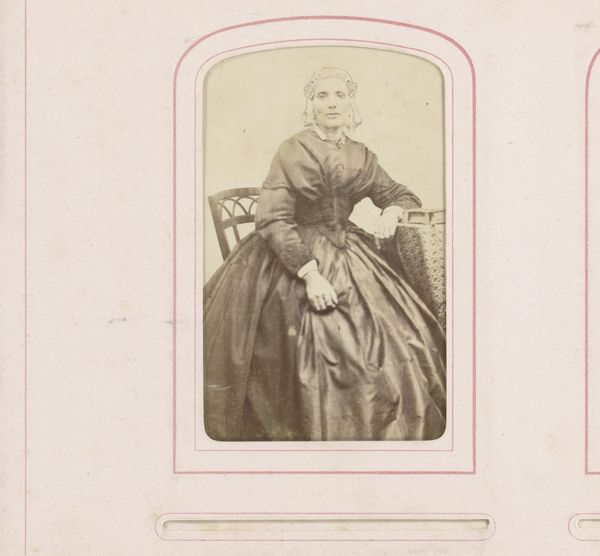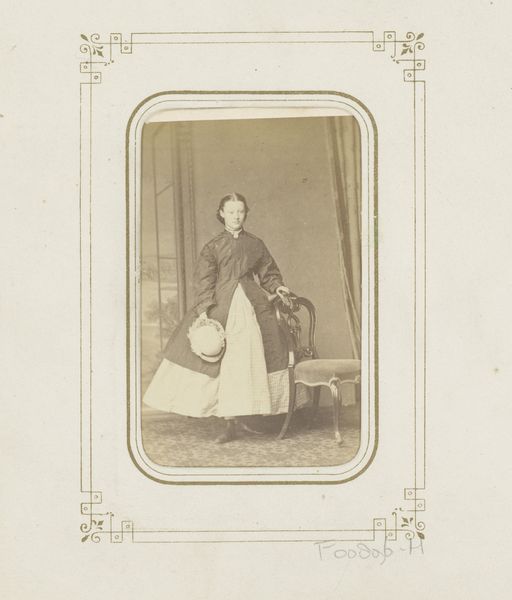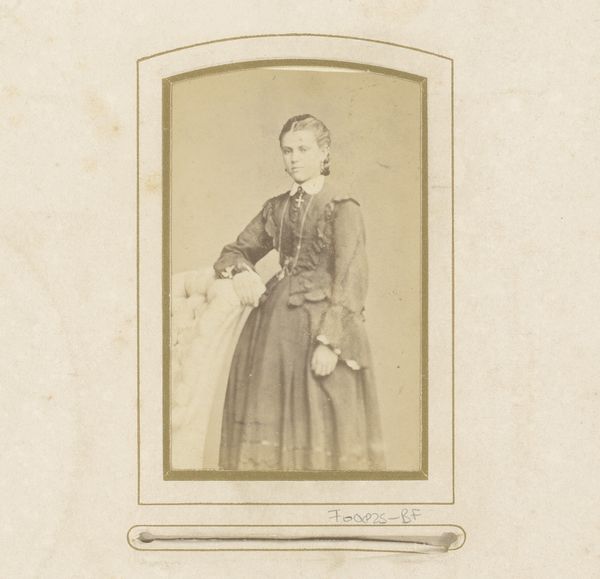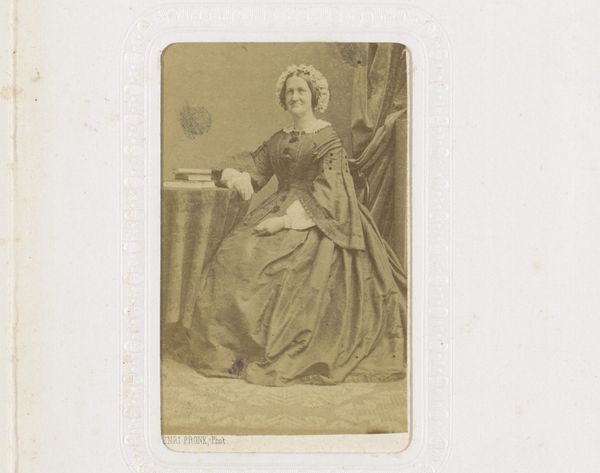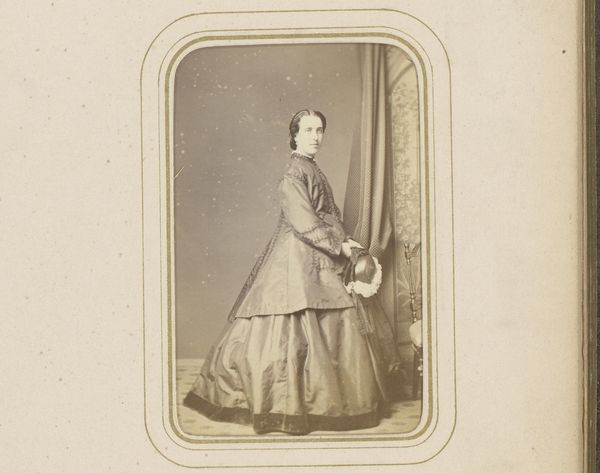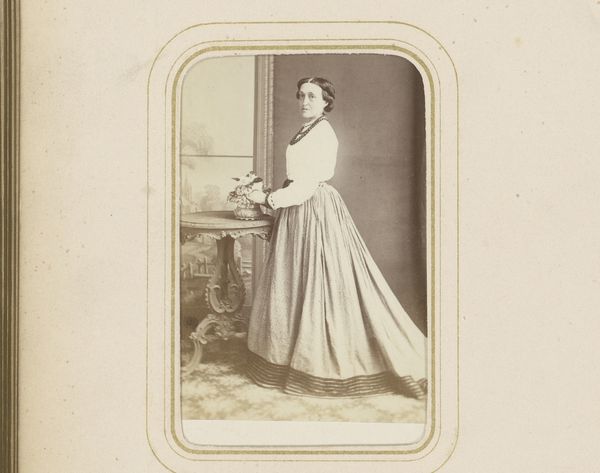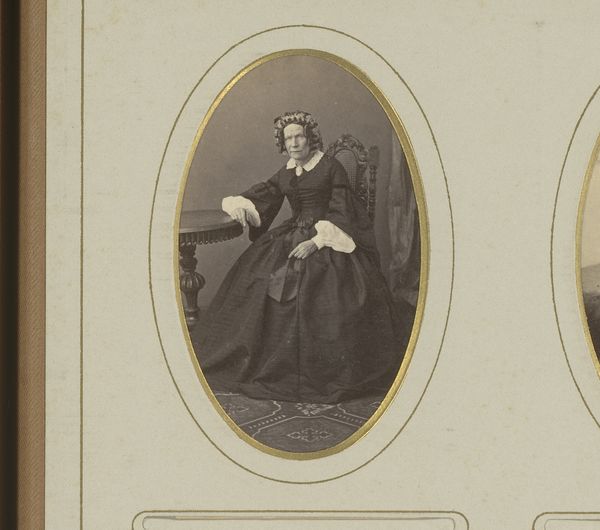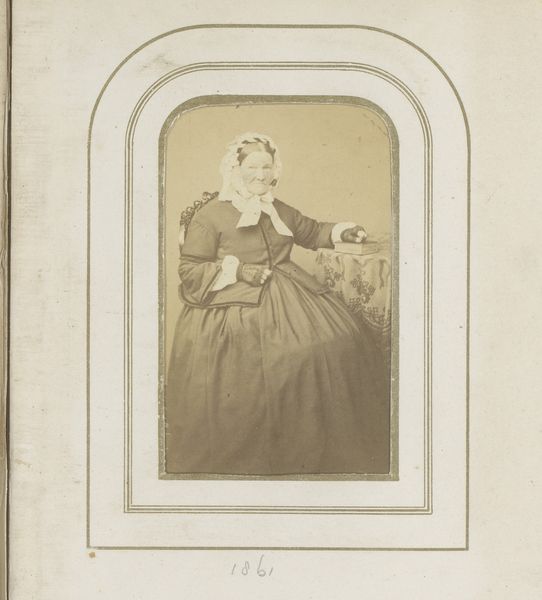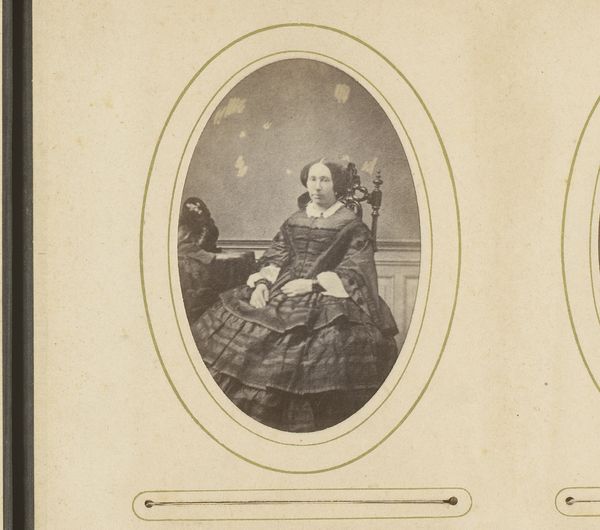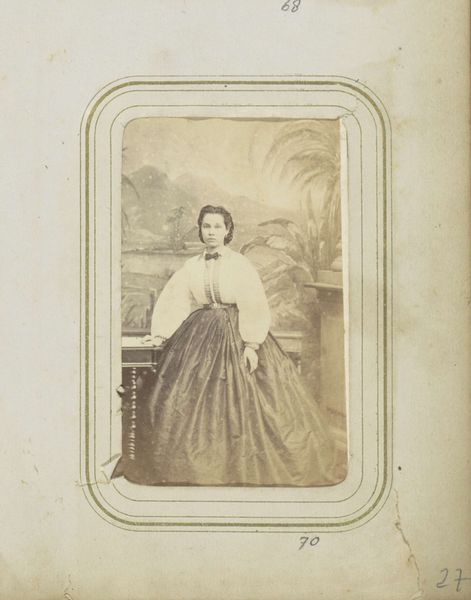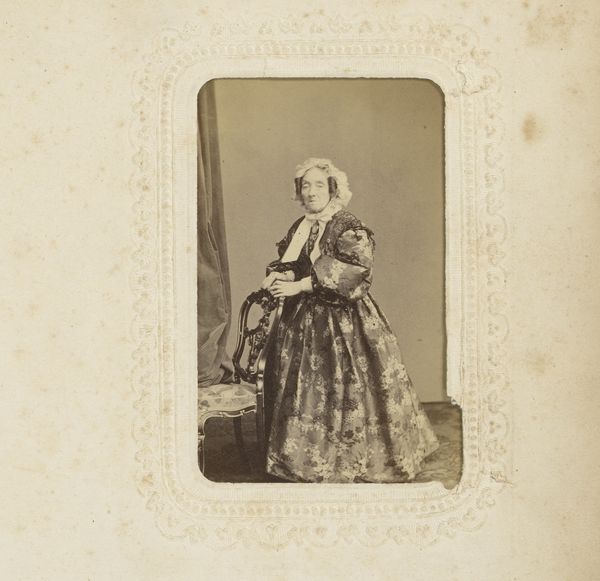
photography, gelatin-silver-print
#
portrait
#
photography
#
gelatin-silver-print
Dimensions: height 104 mm, width 62 mm
Copyright: Rijks Museum: Open Domain
Curator: Well, here we have a captivating photographic portrait. It's entitled "Portret van een zittende vrouw met muts en strik" or "Portrait of a seated woman with bonnet and bow," made sometime between 1866 and 1870, and created by J. Wijnman. Editor: My first thought? Intimate, in a reserved kind of way. It feels like stumbling upon a private moment, yet the formal setting adds a layer of…politeness? Curator: Precisely! You see the almost stern composure; there's a vulnerability there as well, in the slight droop of her eyes, or how tightly she clutches her hands, which seems at odds with the decorative lace. Made with the gelatin-silver process, you see those rich sepia tones? It evokes a strong sense of history. Editor: The gelatin-silver process is key here. It was much cheaper and quicker to develop than previous methods like daguerreotypes. The rise of photographs meant rising expectations to pose with the correct posture and display a sort of manufactured grace – all caught here in her fixed expression, the formal clothes and bow as a way to show middle-class affluence, which was increasingly important. Curator: Right! This wouldn't have been just about vanity, even though it plays a part. Having a portrait like this taken would’ve represented an entry into the bourgeoisie lifestyle, while keeping with the more artistic trend of capturing “likenesses” of everyday people. The sitter’s adornments point to a lifestyle that goes beyond purely material needs – those frills! Editor: And I notice her dark dress. Likely not mourning clothes as those were strictly prescribed, but a durable and stylish choice to convey serious sophistication. The question for me, though, is how this challenges our own contemporary ideas around the time involved for fashion versus artistic production today. Curator: A great point, actually. Looking at this again, I realize that, while the photograph is rather straightforward, what we bring to it—our expectations, anxieties, even—change over time. What a marvelous interplay between past and present, then and now. Editor: Indeed. It prompts consideration of the sheer volume of images circulating today, asking whether more accessible mediums dilute both subject and process.
Comments
No comments
Be the first to comment and join the conversation on the ultimate creative platform.
